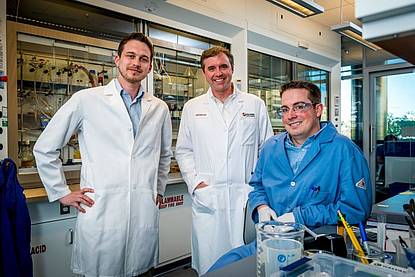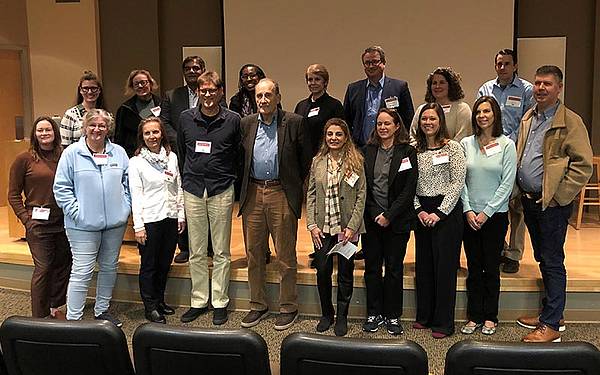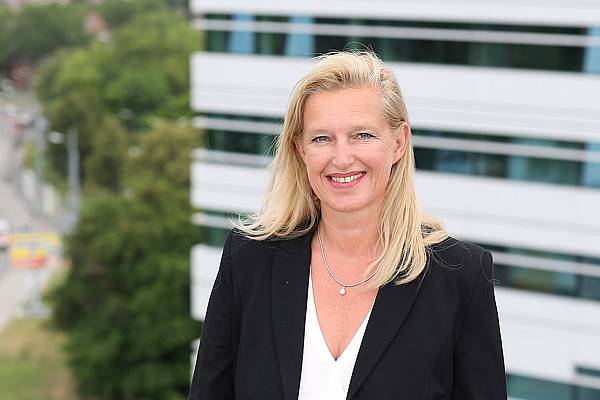Ihr Weg zum Studium an der FH Campus Wien beginnt mit der Registrierung auf unserer Bewerbungsplattform. In Ihrem Online-Account können Sie direkt mit der Bewerbung starten oder einen Reminder aktivieren, wenn die Bewerbungsphase noch nicht begonnen hat.
Das Verhältnis der Studienplätze zu Bewerber*innen beträgt im Masterstudium Molecular Biotechnology derzeit ca. 1:4,5.
Aus organisatorischen Gründen empfehlen wir Bewerber*innen außerhalb der EU, des EWR und der Schweiz, ihre Bewerbung spätestens bis Ende Februar abzuschicken.
Dokumente für Ihre Online-Bewerbung
- Identitätsnachweis
- Reisepass oder
- Personalausweis oder
- österreichischer Führerschein (Staatsbürgerschaftsnachweis erforderlich) oder
- Aufenthaltstitel (Staatsbürgerschaftsnachweis erforderlich)
- Nachweis über eine Namensänderung, falls zutreffend (z. B. Heiratsurkunde)
- Nachweis über die Erfüllung der fachlichen Zugangsvoraussetzung
- Studienabschlussurkunde und
- Transcript of Records oder Diploma Supplement
- Wenn Sie Ihr Studium noch nicht abgeschlossen haben, laden Sie bitte einen Nachweis über alle bisher im Zuge des facheinschlägigen Studiums absolvierten Lehrveranstaltungen inkl. ECTS-Credits hoch.
- Sprachnachweis Englisch Niveau C1 des Gemeinsamen Europäischen Referenzrahmens für Sprachen (GER). Als Nachweis gilt:
- Transcript of Records/Diploma Supplement eines mindestens zweijährigen Studiums, das an einer Hochschule eines EU-/EWR-Mitgliedstaats, der Schweiz, des Vereinigten Königreichs Großbritannien und Nordirland, der USA, Australiens, Neuseelands oder Kanadas absolviert wurde (bzw. Alternative vor Abschluss, siehe Punkt 3) - Kein weiterer Englisch-Sprachnachweis nötig.
- Englisch-Zertifikat (nicht älter als 3 Jahre), z. B.:
- FH Campus Wien: Oxford Test of English Level C1 (score range = 141-170)
- TOEFL: 95+ Punkte
- IELTS Academic: Overall Band Score = mind. 7
- Cambridge: Ergebnis Level C1 (minimum scale score = 180 bei B2 First (FCE) oder C1 Advanced (Certificate in Advanced English CAE))
- Nachweise über ein höheres Sprachniveau gelten ebenfalls.
- tabellarischer Lebenslauf auf Englisch
- Motivationsschreiben auf Englisch
- ausgefüllte Tabelle zum Nachweis der ECTS-Credits aus vorherigen Studien
- Beglaubigungen und Übersetzungen, falls zutreffend (siehe Reiter "Ausländische Dokumente und Abschlüsse")
Ihre Bewerbung ist gültig, wenn Sie die erforderlichen Unterlagen vollständig hochgeladen haben. Sollten Sie zum Zeitpunkt Ihrer Online-Bewerbung noch nicht über alle Dokumente verfügen, reichen Sie diese bitte umgehend nach Erhalt per E-Mail an das Sekretariat nach.
Nach Abschluss Ihrer Online-Bewerbung erhalten Sie eine E-Mail-Bestätigung mit Informationen zum weiteren Ablauf.
1Wenn Sie Ihr Studium noch nicht abgeschlossen haben, laden Sie bitte einen Nachweis über alle bisher im Zuge des facheinschlägigen Studiums absolvierten Lehrveranstaltungen inkl. ECTS-Credits hoch und reichen Sie den Nachweis umgehend nach Erhalt per E-Mail an das Sekretariat nach.














